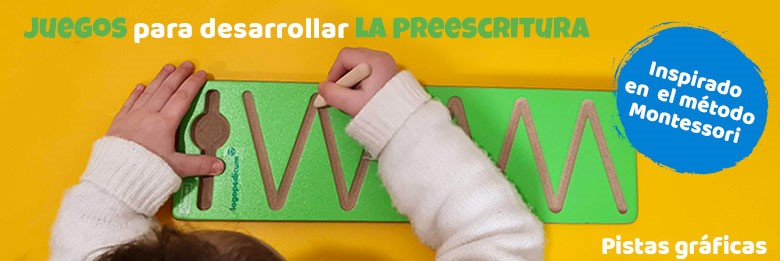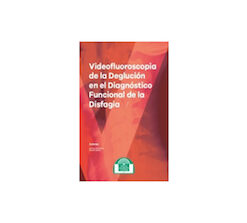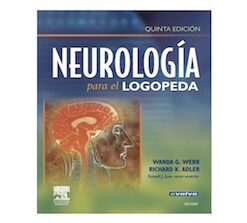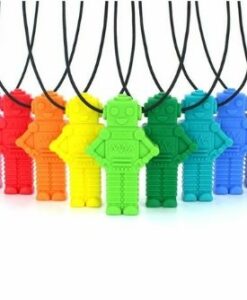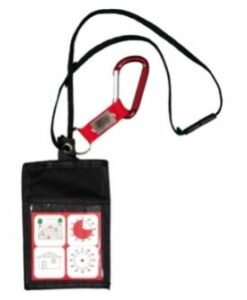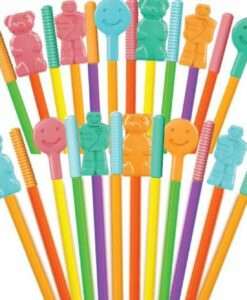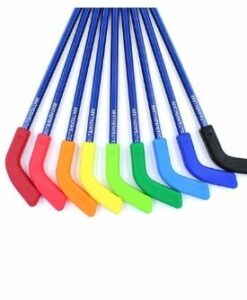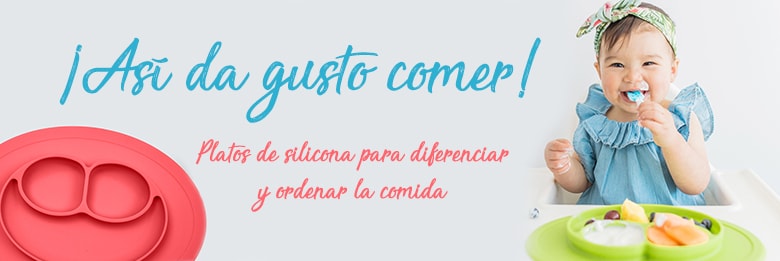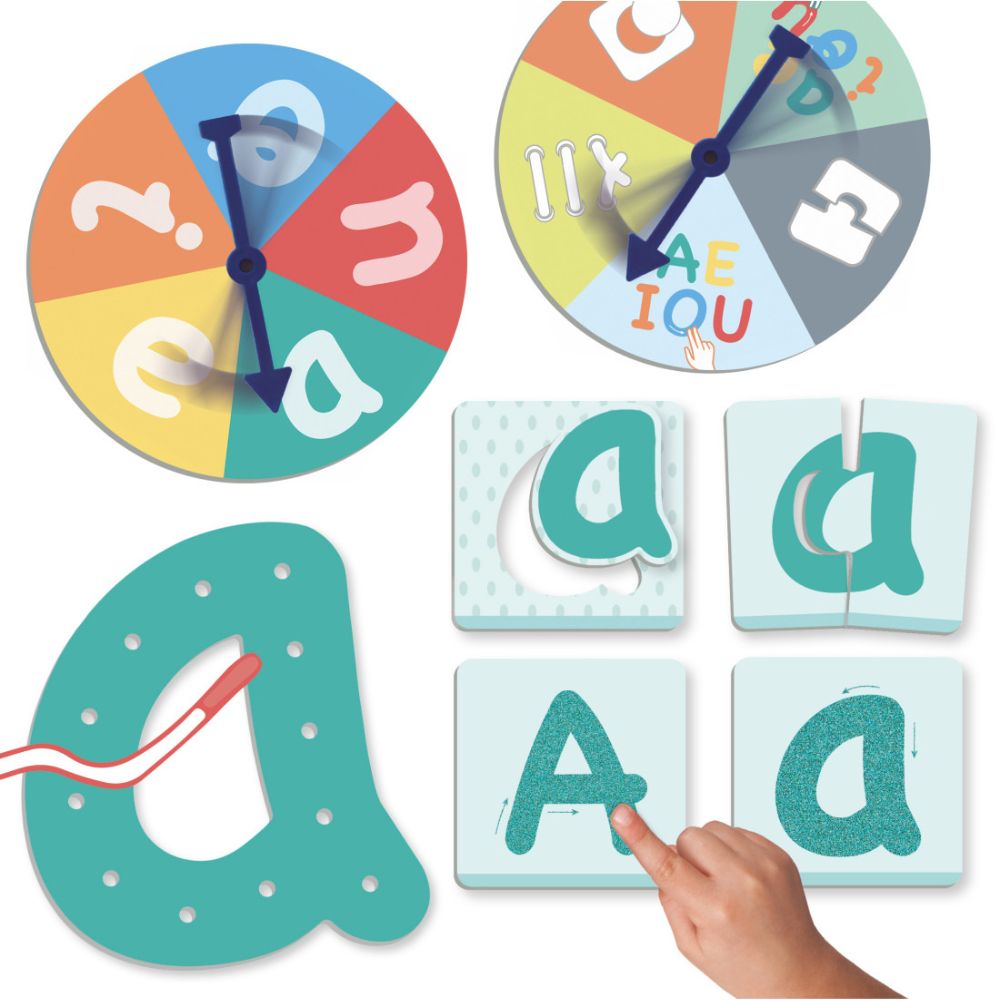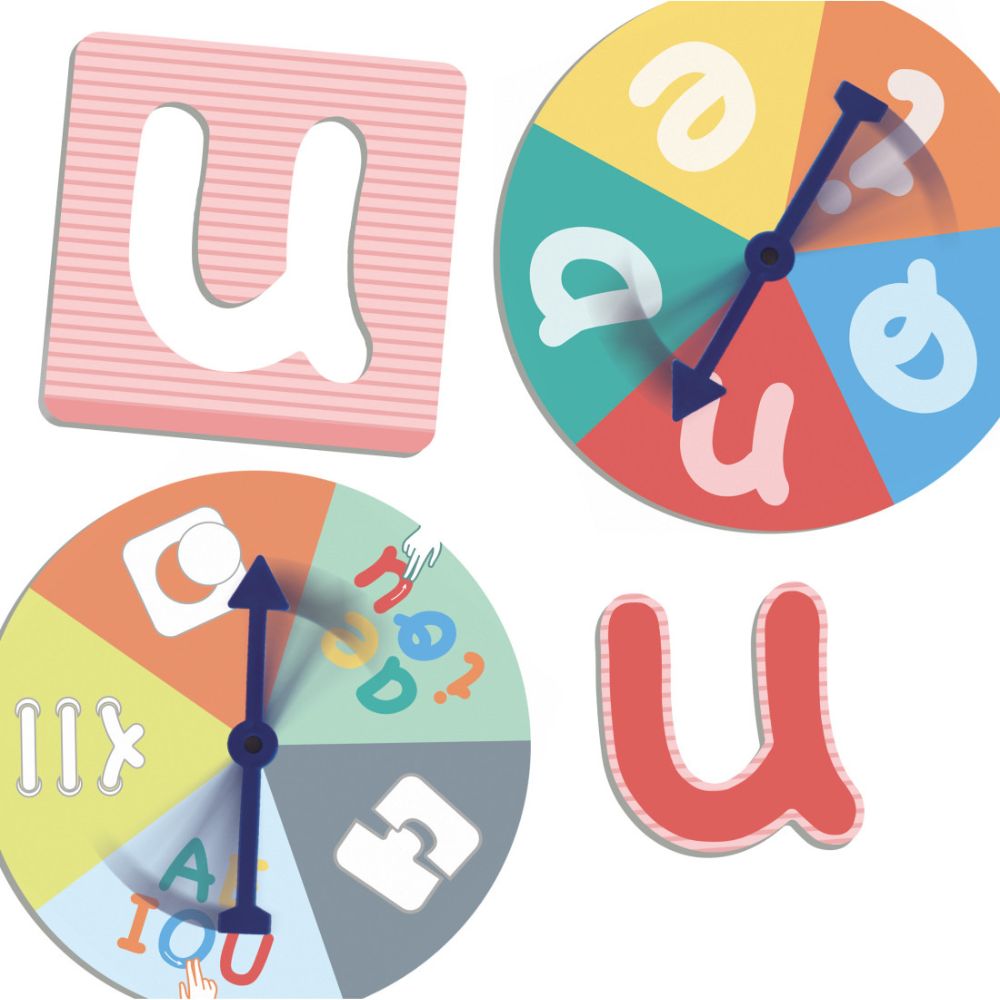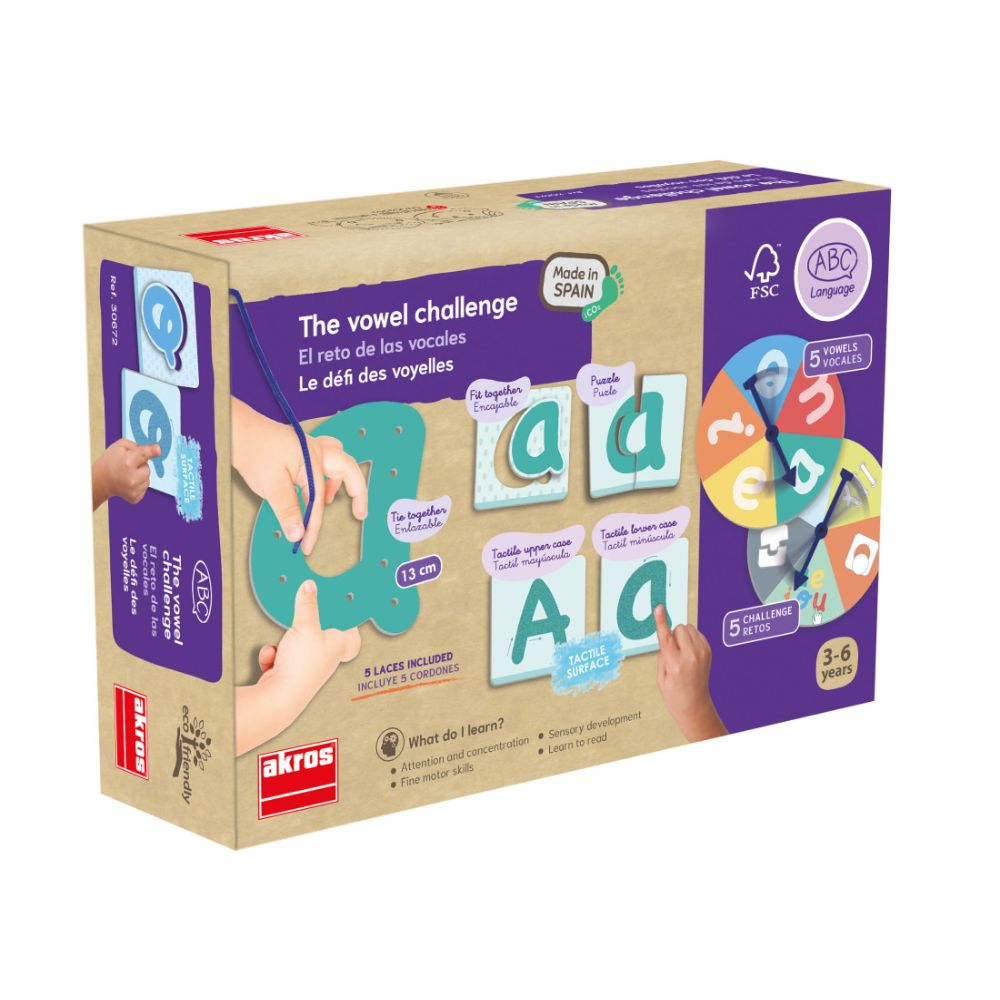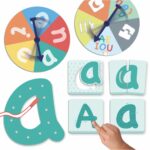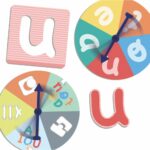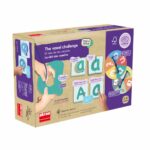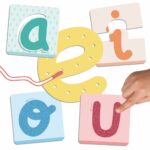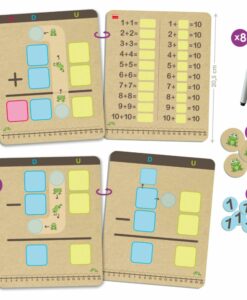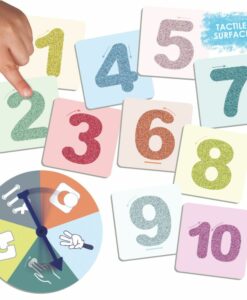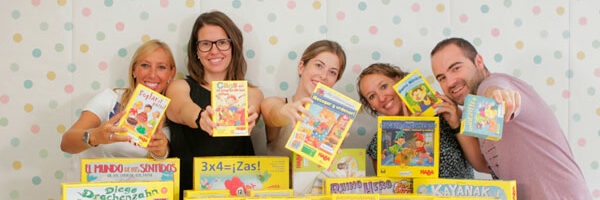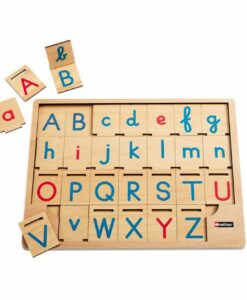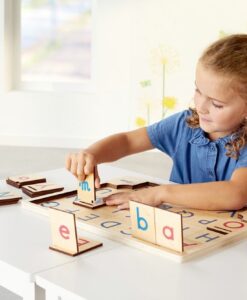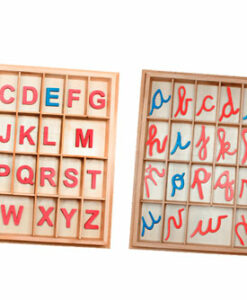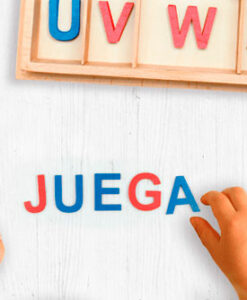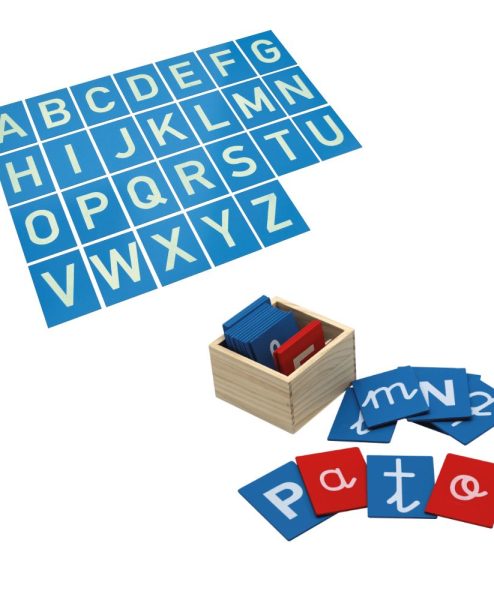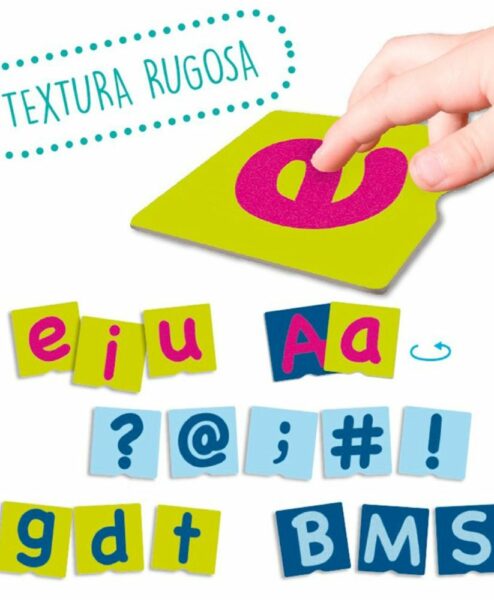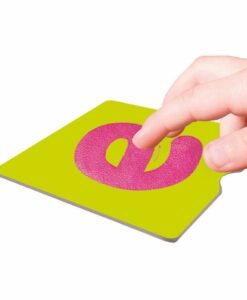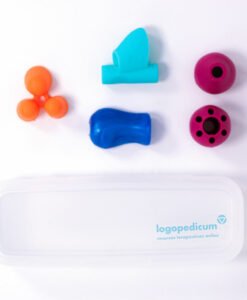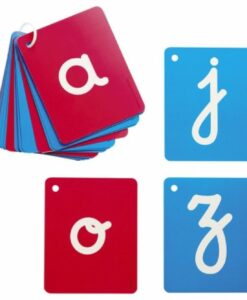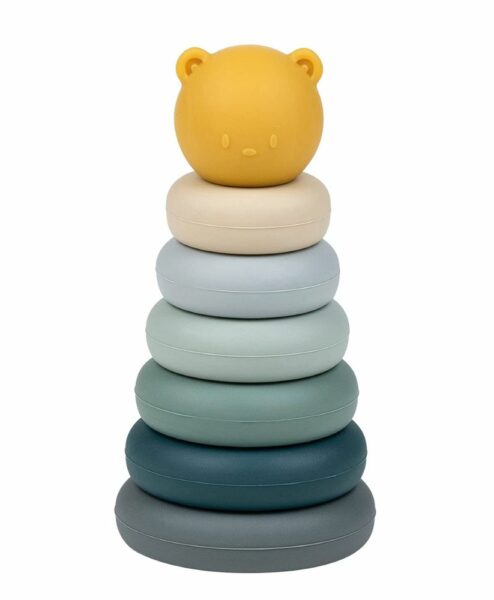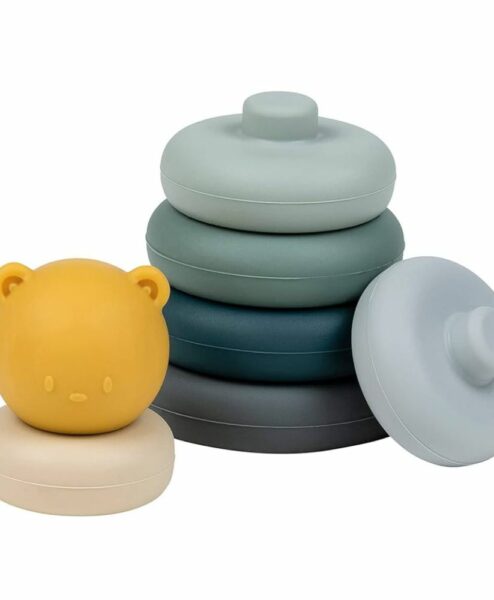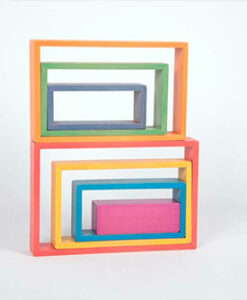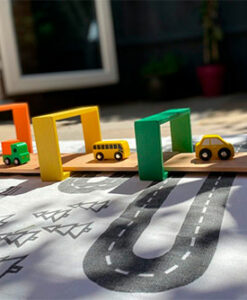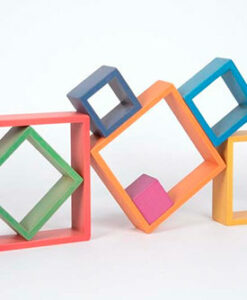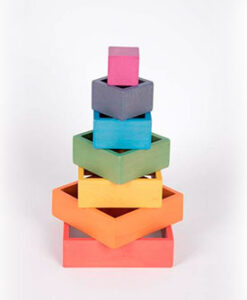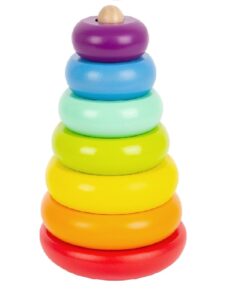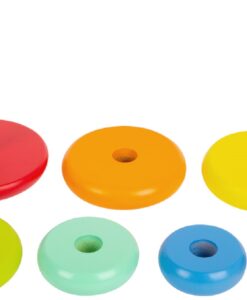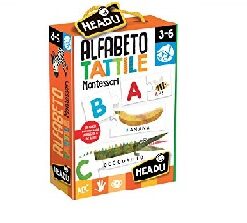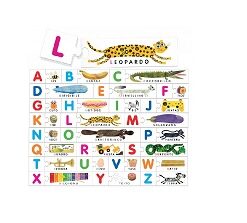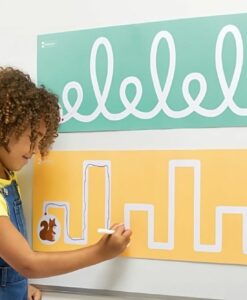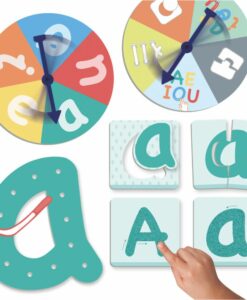Description
I play manipulatively while learning the vowels.
Discover the vowels through the senses, in a manipulative and creative way. Learn them with tactile trails, puzzles and large silhouetted pieces to link with the strings. Spin the wheels and learn the vowels, uppercase and lowercase, with fun challenges!
Includes:
- 2 cardboard roulette wheels (12.2 cm)
- 20 square tokens made of strong cardboard (9 cm)
- 5 silhouetted vowels made of strong cardboard (12 x 13 cm)
- 5 ergonomic cords
CONTENTS:
The set consists of 20 square tiles (5 interlocking tiles, 5 two-piece puzzles and 10 tiles with a rough surface), 2 roulette wheels, 5 interlocking silhouetted vowels and 5 ergonomic cords in different colors. The tokens are made of thick, resistant and high quality cardboard. The material is environmentally friendly, comes from sustainable forests, is composed of a high percentage of recycled material, and is 100% recyclable.
DESCRIPTION OF THE CHALLENGES:
- Puzzle: form the vowel by joining the two pieces together
- Upper case tactile traversing: traversing with one finger
- Fitting: to form the vowel by fitting the two pieces together.
- Lower case tactile traversing: traversing with one finger
- Linkable: linking the vowel with a string
RECOMMENDED AGE: From 3 to 6 years old.
Formal learning of reading and writing begins at the age of 5, but it is recommended that children become familiar with the letters beforehand, starting with the vowels. This game allows that previous approach necessary for the youngest children to be able to differentiate the vowels, both in upper and lower case. Although it is suitable for children from 3 to 6 years old, it can be used for older children with special needs who need to work on learning the vowels from a multisensory approach (through different senses), visual and tactile discrimination, association and fine psychomotor skills.
The rough surface allows the development of hand-eye coordination, which is necessary for the subsequent writing of each vowel.
The line at the base of the chips allows correct positioning of the chips and enables them to play autonomously.
Inspired by the Montessori Methodology.
PEDAGOGICAL OBJECTIVES:
- Progressively learn to identify and differentiate vowels from amultisensory approach.
- Improve hand-eye coordination and manual dexterity by manipulating the tiles and matching them correctly.
- To develop fine psychomotor skills by manipulating and linking with cords.
- To work on tactile discrimination through the recognition of a rough surface and to exercise visual memory with tactile trails.
- Improve visual discrimination through vowel recognition.



